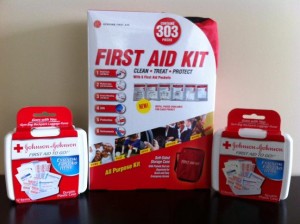
Many people are afraid to help someone who is bleeding heavily. Some are simply afraid of blood while many have no knowledge about the first aid for external bleeding. While it is reassuring to know that many adults actually donate blood and lose a pint of blood with no serious effects, prolonged bleeding and severe loss of blood can lead to shock, which is a dangerous medical condition. You can help prevent shock and its complications by providing immediate first aid. To learn the skills to manage victims of external bleeding enrol into emergency first aid.
First Aid Treatment for External Bleeding
First aid treatment for external bleeding can be summarized as Look, Apply and Elevate.
- LOOK
Check the affected site to assess the severity of the injury/wound. Check if there is any foreign body or debris that has lodged in the wound.
- APPLY
Apply direct pressure over the wound or injured site. Place a piece of clean cloth or sterile dressing over the wound (or whatever clean sheet is available), and then apply direct pressure. If the victim is conscious and is able, encourage him to press on the wound. If the victim is unconscious or not capable, you can provide direct pressure.
Direct pressure over the wound encourages the blood to clot and prevent further bleeding and loss of blood. Ideally, the sterile dressing or clean cloth should be held firmly in place using bandage (triangular bandage or non-adhesive bandage). You can make use of improvised bandage from whatever you have handy, such as a tie, cloth, scarf and so on.
- ELEVATE
Elevate the injured site. If the wound is located in the arms or legs, raise the affected area above the level of the heart. Gravity pulls the blood reducing blood flow to the wound and loss of blood.
If the victim has lost a significant amount of blood, he is most likely to experience shock. Be ready to provide appropriate first aid for shock. Never leave the victim alone and keep him warm. Provide reassurance continuously.
Personal Safety and Protection
In all first aid treatments, protecting yourself from any potential danger is of primary importance. As much as possible, avoid direct contact with body fluids, including blood. This does not only ensure your personal safety but also that of the victim. Here are some ways on how you can protect yourself while providing first aid for external bleeding:
- Use gloves (if available). First aid kits would always have gloves in its stock. Gloves come in many different materials and sizes.
- Ask the victim to apply direct pressure to injury if he is able.
- Use dressings, bandages, or any improvised materials (shirt, cloth, or handkerchief) to protect your hand from the wound.
- If you have wounds or injuries in your hands, keep it covered with dressing, plasters or bandage.
- If your skin has been exposed to blood, wash it off well with hot water and soap. Use bleach and water solution to remove spills of vomit or blood.
If you are concerned about possible infection, you can consult your healthcare provider. It is important to note that the chances of cross-infection while providing first aid on a bleeding victim is very low.